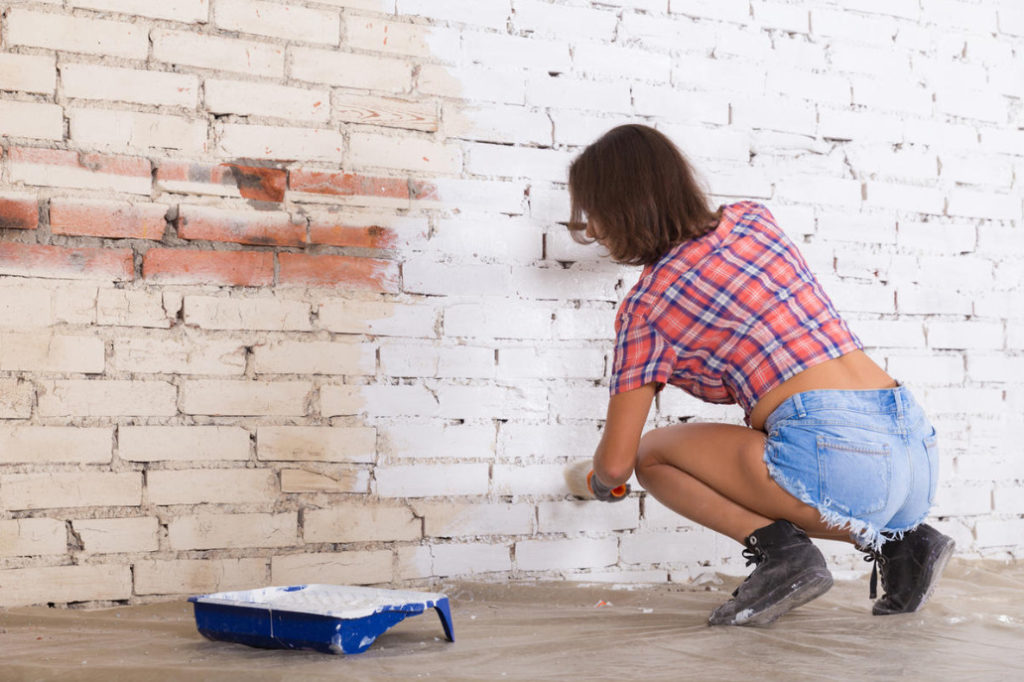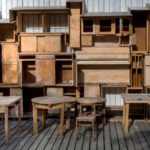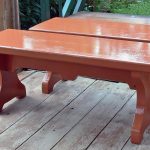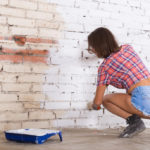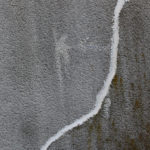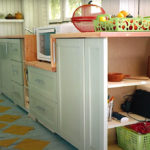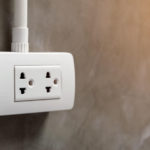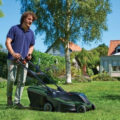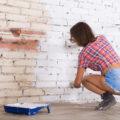Cement paint
One of the cheapest paints for outdoor use. It is supplied in powder form. It is based on white cement with additives of dyes, which gives a wide range of colors.
Preparation of cement paint
- Shake the package and dilute the paint in a bucket at the rate of 2 volumetric parts of powder per 1 part of water. Stir until smooth and pasty and add a little more water to make a creamy mass. Cook as much of the mixture as you can use within an hour (it dries quickly).
- Spray the new and porous surface with water and apply two coats of paint.
Adding filler
If you paint a surface that is dense or treated with a stabilizing solution, it is recommended to add clean sand to the mixture. This provides additional protection and helps to cover up dark colors. If the sand changes the color of the paint, mix it only with the first layer. Add 1 part of sand to 4 parts of powder while the mixture is still in a pasty state.
Important: Dry the new floor! The new floor, which should include a waterproofing gasket, should be dried for 6 months before making a moisture-proof coating such as linoleum or tiles.
Paint for cement floors
Floor paints are designed for severe operating conditions. They paint concrete floors in a garage or workshop, garden paths, steps and other concrete surfaces.
The floor must be clean, dry and fat-free. If the concrete has been laid recently, give it about a month to “mature” before you start painting. In most cases, it is recommended to primer floors with a porous or dusty surface with a special primer for cement.
The best way to paint a large area is to process the edges with a brush, and then use a roller with a long handle to paint the main part of the surface.
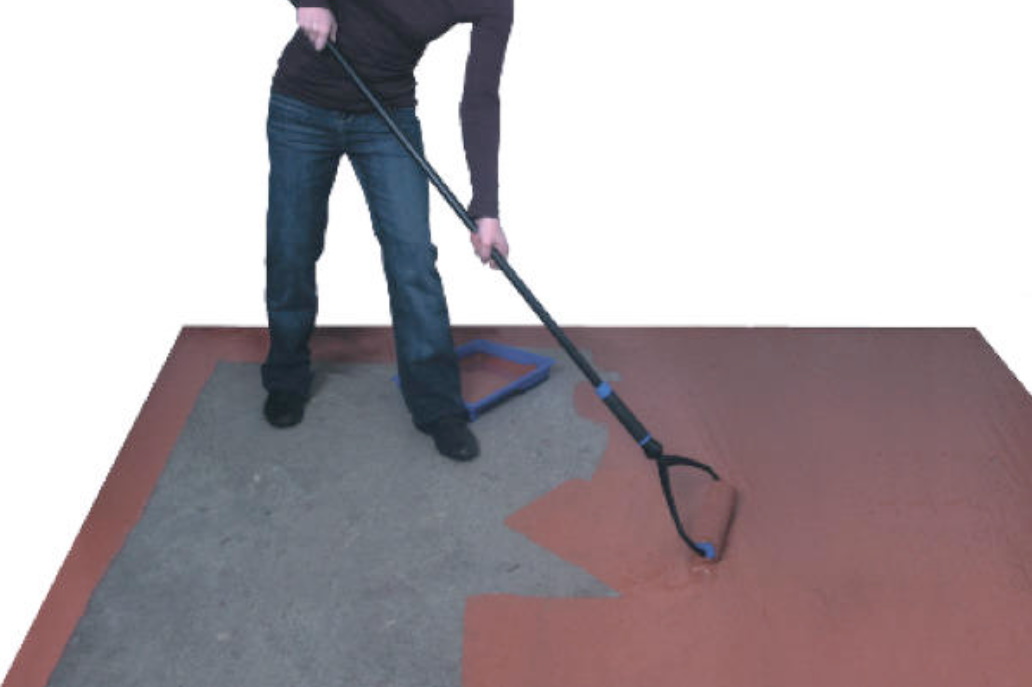
Masonry painting technique
Painting smooth masonry is not a big problem, but for smooth painting of textured surfaces, you need to know some simple techniques of work.
Working with brushes
To paint the walls, choose brushes with a width of 100-150 mm — larger ones are heavy, and the hand gets tired quickly. When processing walls with a rough surface, a good brush with stiff bristles will last longer.
Apply the paint with vertical strokes, intersecting them with horizontal ones. When painting textured walls, you may need a special paint application technique.
Pulling the panel
Painting at the very border of a part, such as a door or window frame, is called pulling the panel. On a smooth surface, it is easy enough to guide the brush exactly along the border of the part, but it is difficult to do this with ordinary strokes on a textured surface.

Do not try to put more paint in the hope of solving this problem. Proceed as follows: lightly touch the surface of the wall with the tip of the brush, then shade from the edge to distribute the excess paint after filling the texture. Remove paint splashes from the window frames of door frames with a cloth soaked in an appropriate solvent.
Painting the surface behind the pipes
Wrap the drainpipe with newspapers. Paint the wall behind the pipe with a brush, then slide the newspaper tube down to the next section of the pipe.
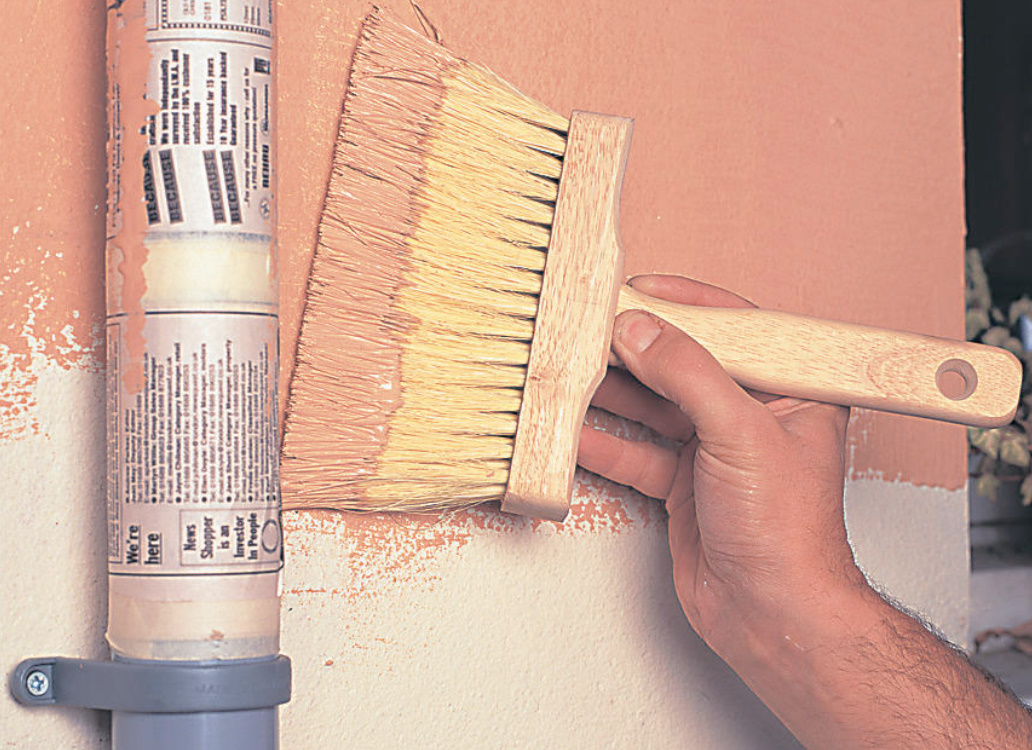
Working with a brush with a handle
Paint the surface with a deep texture with a brush with a handle. Pour the paint into the roller tray and dip the brush into it. Apply the paint in a circular motion so that it fits well on an uneven surface.
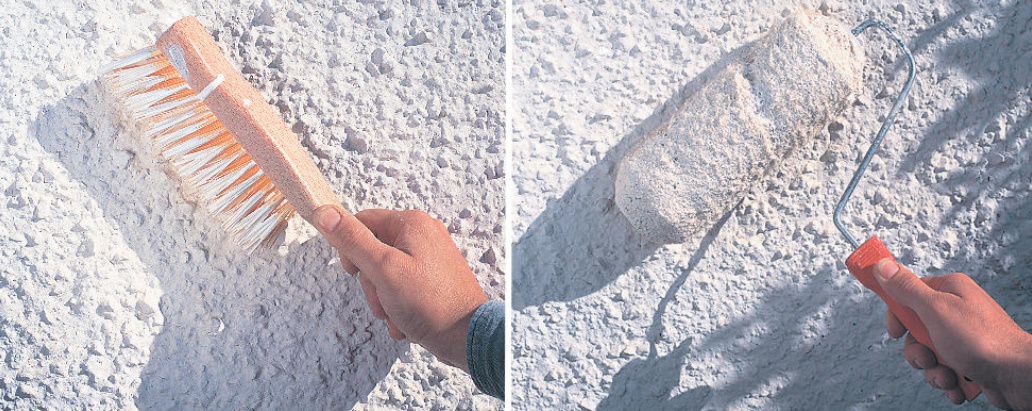
Roller work
The roller applies paint three times faster than a brush. For a deep texture, use a long—pile roller, and for a fine-textured or smooth surface – with medium pile.
On rough walls, the rollers wear out very quickly, so always keep a spare fur coat on hand. Change the direction of the smear so that the coating is uniform. Paint corners and other details with a brush.
Working with a spray gun
Spraying is the fastest and most effective way to paint large surfaces. All parts that are not subject to painting must be covered with newspapers and masking tape.

- Dilute the paint by about 10% and adjust the spray gun according to the manufacturer’s recommendations. It is advisable to wear a respirator.
- Keep the spray gun at a distance of 20-25 cm from the wall and paint it with uniform parallel movements (passages).
- Slightly overlap the passages and try to keep the remote control perpendicular to the surface.
- Pull the trigger just before the start of each pass and release it before the end of the movement.
- Paint large free surfaces with vertical stripes with an overlap of 100 mm.
- Paint the outer (convex) corners by pointing the spray gun precisely at the edge so that the paint lies flat on both surfaces.
- Paint the sides of the inner corner separately.
Now all you need is to buy paint, brushes, stock up on paint tape and paper, and also decide on the scale of the work. And thanks to all these simple rules from this article you will get an excellent result and it doesn’t matter where you paint!
